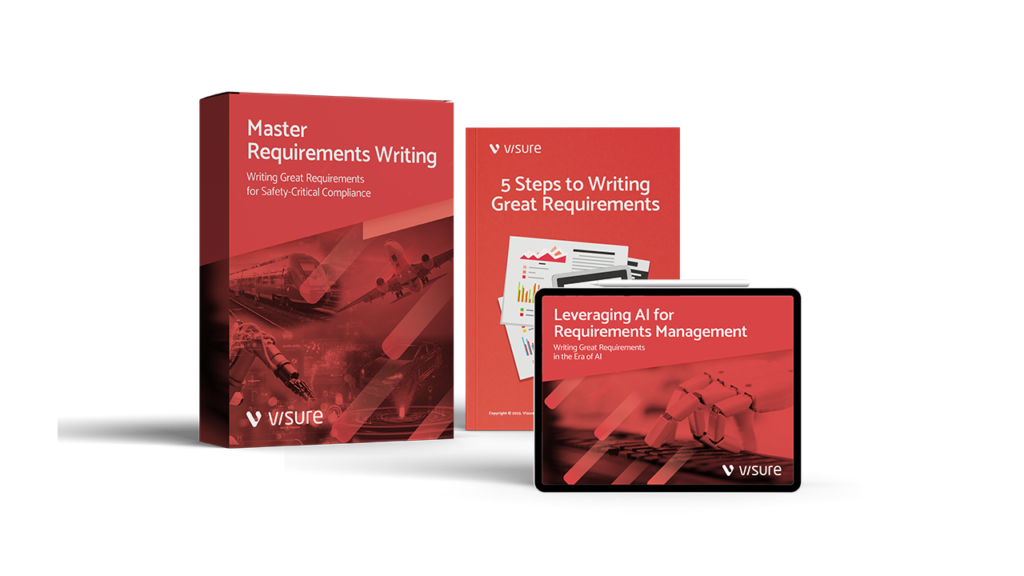Introduction In today’s fast-paced project environments, ensuring comprehensive Requirements Lifecycle Coverage is essential for the successful delivery of complex systems. Whether you’re managing software development, engineering projects, or IT systems, effectively covering the full requirements lifecycle ensures that every phase, from initial requirements definition to final validation, is carefully managed and aligned with project goals. […]
Blog Visure solutions
What is Requirements Gathering?
Introduction In any successful project, understanding what needs to be accomplished is the foundation for achieving desired outcomes. This is where requirements gathering plays a pivotal role. Requirements gathering is the process of identifying, analyzing, and documenting the essential needs and objectives of stakeholders to ensure project success. It serves as the cornerstone of the […]
Requirements Gathering Techniques in Agile Software Engineering
Introduction In Agile software development, effective Requirements Gathering is a cornerstone for successful project execution. Unlike traditional approaches, Agile emphasizes flexibility, collaboration, and rapid adaptation, making Agile Requirements Gathering a dynamic and ongoing process. As teams work iteratively to define and refine product requirements, leveraging the right Agile Requirements Gathering Tools becomes essential. These tools […]
Read More… from Requirements Gathering Techniques in Agile Software Engineering
What is Requirements Engineering: Process for Software and Systems
Introduction Requirements Engineering is the backbone of successful software and systems development. It is a structured process that ensures all stakeholders’ needs are effectively captured, analyzed, documented, and managed throughout the project lifecycle. From defining clear objectives to mitigating risks associated with vague or conflicting requirements, Requirements Engineering is essential to delivering high-quality outcomes within […]
Read More… from What is Requirements Engineering: Process for Software and Systems
Requirements Definition: What is it and How to Apply It?
Introduction Requirements definition is a critical process in project management and systems engineering, serving as the foundation for successful project execution. It involves identifying, documenting, and managing the needs and expectations of stakeholders to ensure alignment throughout the project lifecycle. Properly defined requirements guide the project scope, mitigate risks, and prevent costly mistakes. In this […]
Read More… from Requirements Definition: What is it and How to Apply It?
What is Impact Analysis?
Introduction In today’s fast-paced and ever-evolving industries, the ability to anticipate the ripple effects of changes is critical to project success. Impact analysis serves as a powerful tool for identifying, evaluating, and managing the consequences of proposed changes in projects, systems, or processes. By systematically analyzing dependencies and assessing risks, impact analysis ensures organizations make […]
Manage Requirements Changes: How to Modify and Edit Requirements
Introduction In project development, modifying requirements changes is a critical aspect that directly influences the success of a project. Requirements serve as the foundational guide, outlining the essential features, functions, and goals of a project. However, as projects progress, changes in client needs, technology, or market conditions often lead to updates or revisions in these […]
Read More… from Manage Requirements Changes: How to Modify and Edit Requirements
Requirements Change Management: Definition & Process
Introduction In dynamic project environments, managing changes to requirements is essential to ensure that development remains aligned with stakeholder needs and project goals. Requirements change management is the structured process of evaluating, approving, and implementing changes to project requirements as they arise. Without a clear change management strategy, projects can quickly suffer from scope creep, […]
Read More… from Requirements Change Management: Definition & Process
Requirements-Based Testing
Introduction In today’s fast-paced software development environment, ensuring the quality and reliability of a product is crucial. One of the most effective methods for achieving this is requirements-based testing. This approach focuses on validating that a system’s functionality aligns precisely with its specified requirements, ensuring comprehensive test coverage and early defect detection. By basing tests […]
How to Measure and Identify the Quality of Requirements
Introduction In any project, requirements act as the foundation for success, guiding the development process and setting clear expectations for stakeholders. However, the quality of these requirements often determines whether a project will meet its goals, stay within budget, and be completed on time. Poorly defined requirements can lead to costly rework, missed deadlines, and […]
Read More… from How to Measure and Identify the Quality of Requirements
